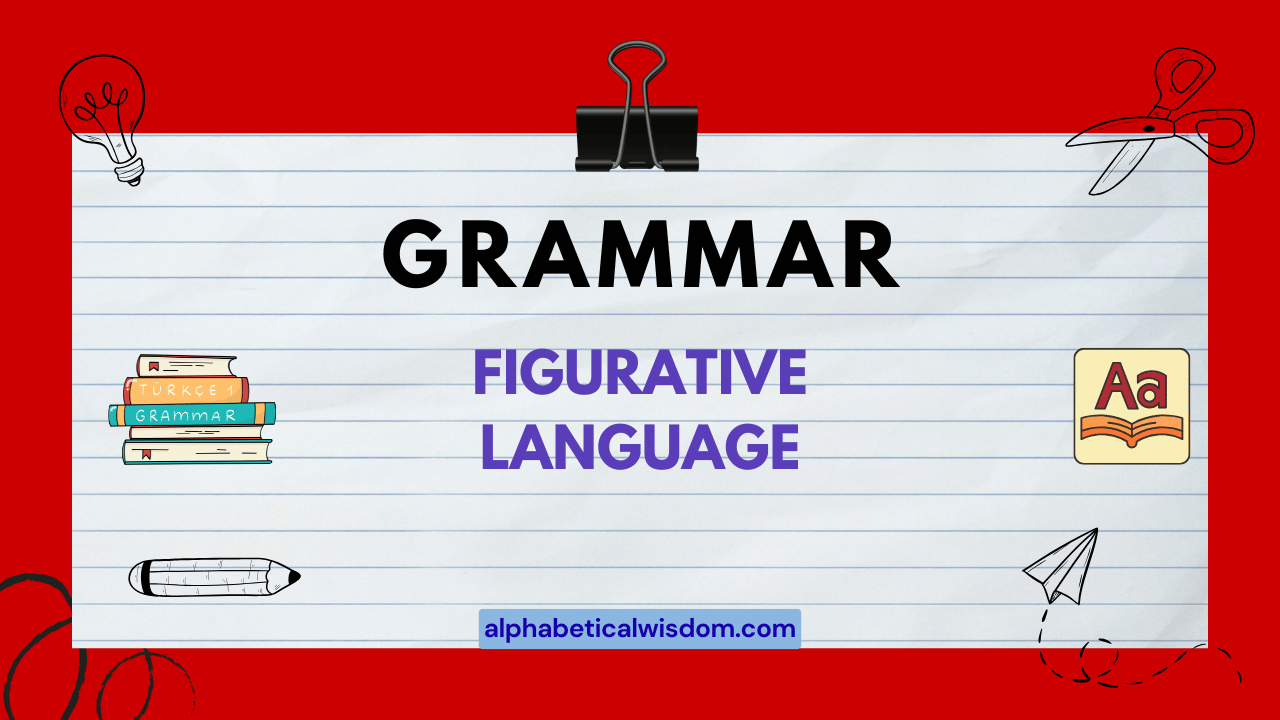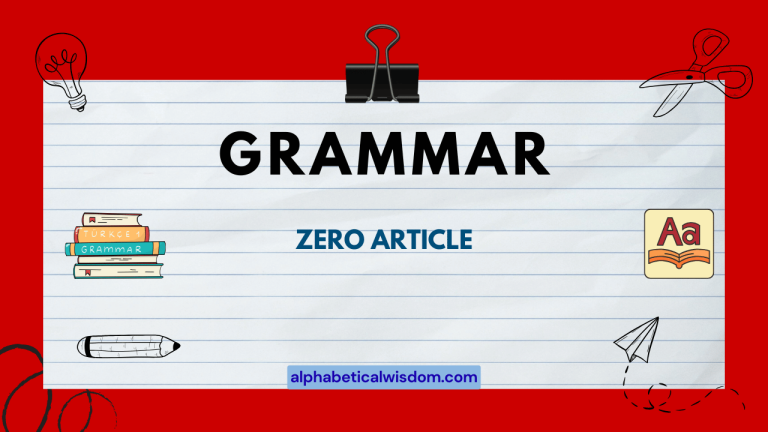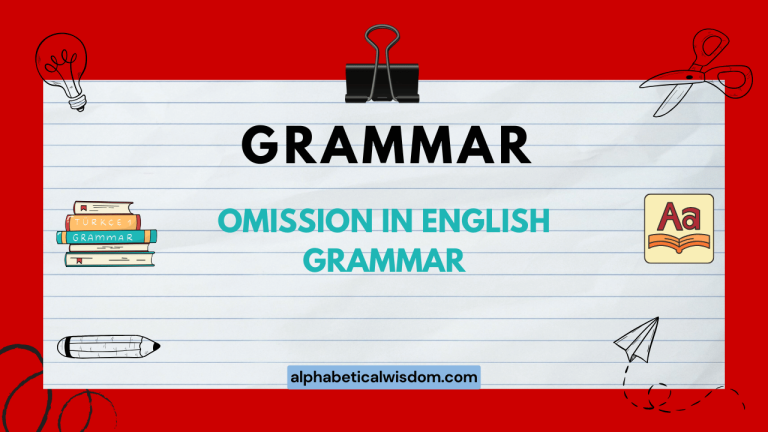Figurative Language: Mastering Figures of Speech
Figurative language is the art of saying one thing but meaning another. It moves beyond the literal to add color, depth, and impact to our communication.
Understanding figurative language is crucial for interpreting literature, poetry, and everyday conversation. This article delves into the various types of figures of speech, providing clear definitions, examples, and practical exercises to enhance your comprehension and usage.
Whether you are a student, a writer, or simply someone who loves language, this guide will equip you with the tools to master the nuances of figurative language and elevate your communication skills.
Table of Contents
- Definition of Figurative Language
- Structural Breakdown
- Types and Categories of Figurative Language
- Examples of Figurative Language
- Usage Rules
- Common Mistakes
- Practice Exercises
- Advanced Topics
- FAQ
- Conclusion
Definition of Figurative Language
Figurative language is language that uses words or expressions with a meaning that is different from the literal interpretation. It employs figures of speech to be more effective, persuasive, and impactful. Instead of stating facts directly, it uses comparisons, exaggerations, or other literary devices to create a vivid image in the reader’s or listener’s mind. Figurative language is not meant to be taken literally; rather, it is designed to evoke emotion, add depth, and enhance the overall message. It is a fundamental aspect of creative writing, poetry, and even everyday communication.
The function of figurative language is multifaceted. It can make abstract concepts more concrete, simplify complex ideas, and add a layer of artistry to communication.
It allows speakers and writers to express themselves in a more imaginative and engaging way, capturing the audience’s attention and leaving a lasting impression. By using figures of speech, we can convey emotions, attitudes, and perspectives that would be difficult to express through literal language alone.
The context in which figurative language is used is crucial for understanding its intended meaning. The cultural background, the speaker’s intent, and the overall tone of the communication all contribute to how a figure of speech is interpreted.
Structural Breakdown
The structure of figurative language varies depending on the specific figure of speech being used. However, most figures of speech involve a comparison between two unlike things or ideas.
This comparison can be explicit, as in a simile, or implicit, as in a metaphor. Other figures of speech, such as hyperbole and understatement, rely on exaggeration or minimization to create emphasis.
Still others, like idioms, are phrases whose meaning cannot be understood from the literal definitions of the individual words. Understanding the underlying structure of each figure of speech is essential for recognizing and interpreting it correctly.
For example, a simile typically includes the words “like” or “as” to make a direct comparison (e.g., “He is as brave as a lion”). A metaphor, on the other hand, implies a comparison without using these words (e.g., “He is a lion in battle”).
Personification gives human qualities to inanimate objects or animals (e.g., “The wind whispered secrets”). Hyperbole uses extreme exaggeration for emphasis (e.g., “I’m so hungry I could eat a horse”).
Understatement does the opposite, minimizing the importance of something (e.g., “It’s just a scratch” when referring to a serious injury). By analyzing the structure of these figures of speech, we can gain a deeper understanding of their meaning and impact.
Types and Categories of Figurative Language
Simile
A simile is a figure of speech that compares two unlike things using “like” or “as.” It’s a direct comparison that highlights a similarity between the two subjects. Similes are used to make descriptions more vivid and relatable.
Metaphor
A metaphor is a figure of speech that compares two unlike things without using “like” or “as.” It implies that one thing *is* another, creating a more powerful and imaginative comparison than a simile.
Personification
Personification is giving human qualities or characteristics to non-human things, such as animals, objects, or ideas. This brings inanimate objects to life and makes descriptions more engaging.
Hyperbole
Hyperbole is the use of extreme exaggeration to emphasize a point or create a humorous effect. It’s not meant to be taken literally; rather, it’s used to add color and impact to a statement.
Understatement
Understatement is the opposite of hyperbole. It involves downplaying the significance of something to create irony or humor. It can be used to emphasize a point by deliberately minimizing its importance.
Idiom
An idiom is a phrase or expression whose meaning cannot be understood from the literal definitions of the individual words. Idioms are culturally specific and often add flavor to everyday language.
Oxymoron
An oxymoron is a figure of speech that combines two contradictory terms. It creates a paradoxical effect that can be thought-provoking or humorous. Examples include “bittersweet” and “living dead.”
Paradox
A paradox is a statement that appears self-contradictory but contains a deeper truth. Paradoxes often challenge our assumptions and invite us to think critically about a subject.
Pun
A pun is a play on words that exploits the different possible meanings of a word or the fact that there are words that sound alike but have different meanings. Puns are often used for humorous effect.
Irony
Irony is the expression of one’s meaning by using language that normally signifies the opposite, typically for humorous or emphatic effect. There are three main types of irony: verbal, situational, and dramatic.
Alliteration
Alliteration is the repetition of the same consonant sound at the beginning of adjacent or closely connected words. It’s often used in poetry and prose to create a musical effect.
Assonance
Assonance is the repetition of the same vowel sound within adjacent or closely connected words. Like alliteration, it’s used to create a musical effect and enhance the rhythm of language.
Onomatopoeia
Onomatopoeia is the use of words that imitate the sounds they describe. Examples include “buzz,” “hiss,” and “meow.” It adds a sensory dimension to writing and makes it more vivid.
Euphemism
A euphemism is a mild or indirect word or expression substituted for one considered to be too harsh or blunt when referring to something unpleasant or embarrassing. It’s used to soften the impact of a statement.
Synecdoche
Synecdoche is a figure of speech in which a part is used to represent the whole, or vice versa. For example, “wheels” might be used to refer to a car.
Metonymy
Metonymy is a figure of speech in which one thing is represented by something closely associated with it. For example, “the crown” might be used to refer to the monarchy.
Examples of Figurative Language
The following tables provide extensive examples of each type of figurative language, to illustrate their usage in various contexts. Each table contains 20-30 examples.
Simile Examples
Similes are a great way to make your writing more descriptive and engaging. The following table showcases a variety of similes.
| Simile | Explanation |
|---|---|
| As brave as a lion | Comparing someone’s bravery to that of a lion. |
| As blind as a bat | Comparing someone’s poor vision to that of a bat. |
| As cold as ice | Comparing something’s temperature or someone’s demeanor to ice. |
| As clear as crystal | Comparing something’s clarity to that of crystal. |
| As cunning as a fox | Comparing someone’s cleverness to that of a fox. |
| As dead as a doornail | Emphasizing that something is completely dead. |
| As different as day and night | Highlighting a stark contrast between two things. |
| As dry as a bone | Comparing something’s dryness to that of a bone. |
| As easy as pie | Comparing something’s simplicity to making a pie. |
| As fierce as a tiger | Comparing someone’s ferocity to that of a tiger. |
| As gentle as a lamb | Comparing someone’s gentleness to that of a lamb. |
| As happy as a clam | Comparing someone’s happiness to that of a clam. |
| As hungry as a bear | Comparing someone’s hunger to that of a bear. |
| As light as a feather | Comparing something’s weight to that of a feather. |
| As old as the hills | Emphasizing that something is very old. |
| As quiet as a mouse | Comparing someone’s quietness to that of a mouse. |
| As red as a rose | Comparing something’s color to that of a rose. |
| As sharp as a tack | Comparing someone’s intelligence to that of a tack. |
| As slow as a snail | Comparing someone’s slowness to that of a snail. |
| As smooth as silk | Comparing something’s texture to that of silk. |
| As stubborn as a mule | Comparing someone’s stubbornness to that of a mule. |
| As tall as a tree | Comparing someone’s height to that of a tree. |
| As tough as nails | Comparing someone’s resilience to that of nails. |
| As white as snow | Comparing something’s color to that of snow. |
| He ran like the wind. | Comparing someone’s speed to that of the wind. |
| She sings like an angel. | Comparing someone’s singing to that of an angel. |
| They fought like cats and dogs. | Comparing their fighting to that of cats and dogs. |
Metaphor Examples
Metaphors add depth and complexity to your writing by creating implied comparisons. Here are some examples of metaphors.
| Metaphor | Explanation |
|---|---|
| He is a lion in battle. | Comparing someone’s bravery and ferocity to that of a lion. |
| The world is a stage. | Comparing life to a theatrical performance. |
| Time is a thief. | Comparing the passage of time to a thief stealing something valuable. |
| Her eyes are stars. | Comparing someone’s eyes to the brightness and beauty of stars. |
| Life is a journey. | Comparing life to a journey with its ups and downs. |
| He is a shining star. | Comparing someone’s talent and success to the brightness of a star. |
| The classroom was a zoo. | Comparing the chaos and noise of a classroom to that of a zoo. |
| She is a walking encyclopedia. | Comparing someone’s knowledge to that of an encyclopedia. |
| He is a rock. | Comparing someone’s stability and support to that of a rock. |
| The city is a jungle. | Comparing the harshness and competitiveness of a city to that of a jungle. |
| Her heart is gold. | Comparing someone’s kindness and generosity to the value of gold. |
| He is a night owl. | Comparing someone’s preference for staying up late to the nocturnal habits of an owl. |
| The internet is an information superhighway. | Comparing the vast network of the internet to a highway for information. |
| She is a ray of sunshine. | Comparing someone’s cheerful and positive demeanor to a ray of sunshine. |
| He is a bear in the morning. | Comparing someone’s grumpiness in the morning to that of a bear. |
| The test was a breeze. | Comparing the ease of a test to that of a gentle breeze. |
| She is a diamond in the rough. | Comparing someone’s hidden potential to a diamond before it is polished. |
| He is a workaholic. | Comparing someone’s dedication to work to an addiction. |
| The news was a dagger to my heart. | Comparing the pain caused by news to the piercing of a dagger. |
| My memory is a little foggy. | Comparing someone’s memory to a fog. |
| The company is a well-oiled machine. | Comparing a company to a machine. |
| He is a bottomless pit. | Comparing someone’s appetite to a pit. |
| She is a fountain of knowledge. | Comparing someone’s knowledge to a fountain. |
Personification Examples
Personification brings inanimate objects to life, making your writing more imaginative and engaging. Here’s a table with examples.
| Personification | Explanation |
|---|---|
| The wind whispered secrets through the trees. | Giving the wind the human ability to whisper. |
| The sun smiled down on us. | Giving the sun the human expression of smiling. |
| The flowers danced in the breeze. | Giving flowers the human action of dancing. |
| The stars winked at me. | Giving stars the human action of winking. |
| The rain cried on the windowpane. | Giving rain the human emotion of crying. |
| The clock ticked impatiently. | Giving a clock the human emotion of impatience. |
| The car coughed and sputtered. | Giving a car the human actions of coughing and sputtering. |
| The computer screen glared at me. | Giving a computer screen the human action of glaring. |
| The door groaned open. | Giving a door the human action of groaning. |
| The thunder roared in the distance. | Giving thunder the human action of roaring. |
| The waves crashed angrily against the shore. | Giving waves the human emotion of anger. |
| The moon peeked out from behind the clouds. | Giving the moon the human action of peeking. |
| The shadows danced in the moonlight. | Giving shadows the human action of dancing. |
| The fire swallowed the forest. | Giving fire the human action of swallowing. |
| The city never sleeps. | Giving a city the human need for sleep. |
| Opportunity knocked on his door. | Giving opportunity the human action of knocking. |
| The mountains stood guard over the valley. | Giving mountains the human action of standing guard. |
| The river snaked through the countryside. | Giving a river the human action of snaking. |
| The book called to me from the shelf. | Giving a book the human action of calling. |
| The floorboards creaked in protest. | Giving floorboards the human action of protesting. |
| The kettle sang on the stove. | Giving a kettle the human action of singing. |
| The leaves whispered secrets to each other. | Giving leaves the human action of whispering. |
Usage Rules
The rules for using figurative language are not as rigid as those for grammar, but there are guidelines to follow to ensure that your use of figures of speech is effective and appropriate. The most important rule is to use figurative language sparingly and purposefully.
Overusing figures of speech can make your writing seem contrived and confusing. Choose figures of speech that are relevant to your subject matter and that enhance your message, rather than distracting from it.
It’s important to understand the cultural context of idioms and other figures of speech to avoid miscommunication or offense.
When using similes and metaphors, make sure that the comparison is clear and logical. The two things being compared should have a recognizable similarity.
Avoid mixed metaphors, which combine incompatible images and can create a confusing or nonsensical effect. For example, “He nipped the budget cuts in the bud” is a mixed metaphor because “nipping something in the bud” refers to stopping something from growing, while “budget cuts” are already a form of reduction.
When using personification, make sure that the human qualities you assign to non-human things are consistent and believable. Avoid using personification in a way that is overly sentimental or unrealistic.
When using hyperbole and understatement, be aware of the tone you are creating. Hyperbole can be used for humorous effect, but it can also be used to emphasize a serious point.
Understatement can be used to create irony or to show restraint. When using irony, make sure that your audience understands that you are not being literal.
Verbal irony can be easily misunderstood if your tone of voice or facial expression does not convey your true meaning. Situational irony and dramatic irony rely on the audience’s awareness of a discrepancy between what is expected and what actually happens.
Puns should be used judiciously, as they can be seen as corny or cliché. Make sure that your pun is clever and relevant to the context.
When using euphemisms, be aware of the connotations of the words you are using. A euphemism can be used to soften the impact of a statement, but it can also be used to obscure the truth or to be evasive.
Synecdoche and metonymy should be used in a way that is clear and easily understood by your audience. Avoid using these figures of speech in a way that is confusing or ambiguous.
Common Mistakes
One of the most common mistakes in using figurative language is mixing metaphors. This occurs when you combine two or more metaphors that don’t logically fit together, creating a confusing or nonsensical image.
Another common mistake is using clichés, which are overused figures of speech that have lost their impact. Avoid using clichés in your writing, as they can make it seem unoriginal and uninspired.
Another mistake is misinterpreting idioms or using them incorrectly. Idioms are culturally specific and can be easily misunderstood by non-native speakers.
Make sure you understand the meaning of an idiom before using it.
Another frequent error is using figurative language excessively. While figures of speech can add color and depth to your writing, overusing them can make it seem contrived and distracting.
Use figurative language sparingly and purposefully, choosing figures of speech that enhance your message rather than detracting from it. Failing to understand the context in which figurative language is used can also lead to misinterpretations.
The meaning of a figure of speech can vary depending on the cultural background, the speaker’s intent, and the overall tone of the communication. Be aware of these factors when interpreting figurative language.
Here’s a table illustrating some common mistakes with figurative language:
| Incorrect | Correct | Explanation |
|---|---|---|
| He was burning the candle at both ends and skating on thin ice. | He was burning the candle at both ends. OR He was skating on thin ice. | Mixed metaphors: Combining two unrelated metaphors creates confusion. |
| As happy as a lark. | As happy as can be. OR She was ecstatic. | Cliché: Overused similes lack originality. |
| I’m feeling under the weather. (Used to describe extreme illness) | I’m feeling seriously ill. | Misinterpreting idiom: “Under the weather” means slightly unwell, not severely ill. |
| The words painted a vibrant picture, and then sang a song. | The words painted a vibrant picture. | Inconsistent personification: Words can paint a picture, but not sing a song. |
| I’ve told you a million times! | I’ve told you many times! | Overused hyperbole: Can diminish the impact. |
Practice Exercises
Test your understanding of figurative language with these exercises. Identify the type of figurative language used in each sentence.
Exercise 1: Identifying Figurative Language
| Question | Answer |
|---|---|
| 1. The snow was a white blanket over the city. | Metaphor |
| 2. He is as tall as a giraffe. | Simile |
| 3. The wind howled in the night. | Personification |
| 4. I’m so hungry I could eat a horse. | Hyperbole |
| 5. It’s raining cats and dogs. | Idiom |
| 6. The silence was deafening. | Oxymoron |
| 7. This is the beginning of the end. | Paradox |
| 8. She sells seashells by the seashore. | Alliteration |
| 9. The door creaked open. | Onomatopoeia |
| 10. He passed away. | Euphemism |
Exercise 2: Completing Sentences with Figurative Language
Complete the following sentences using the appropriate type of figurative language.
| Question | Answer |
|---|---|
| 1. She was as ______ as a button. | cute |
| 2. The detective was a ______, always solving mysteries. | hawk |
| 3. The old car ______ as it drove down the street. | groaned |
| 4. I’ve been waiting for you ______. | forever |
| 5. Don’t beat around the ______, get to the point. | bush |
| 6. He is a ______ giant. | gentle |
| 7. What a pity that youth must be wasted on the ______. | young |
| 8. Peter Piper picked a peck of pickled ______. | peppers |
| 9. The bee went ______. | buzz |
| 10. He is no longer with us, he has ______. | passed away |
Exercise 3: Rewriting Sentences with Figurative Language
Rewrite the following sentences using figurative language to make them more descriptive.
| Question | Answer |
|---|---|
| 1. The house was very old. | The house was as old as the hills. |
| 2. He was very brave. | He was as brave as a lion. |
| 3. The music was loud. | The music was deafening. |
| 4. She was very happy. | She was as happy as a clam. |
| 5. The food was delicious. | The food was heavenly. |
| 6. The classroom was noisy. | The classroom was a zoo. |
| 7. He is very intelligent. | He is a walking encyclopedia. |
| 8. She speaks very quickly. | She speaks a mile a minute. |
| 9. The car is very fast. | The car is as fast as lightning. |
| 10. The secret is safe with me. | My lips are sealed. |
Advanced Topics
For advanced learners, exploring the nuances of figurative language can involve delving deeper into the historical and cultural contexts of specific figures of speech. Understanding the etymology of idioms and metaphors can provide valuable insights into their meaning and usage.
Analyzing the works of famous writers and poets to identify their use of figurative language can enhance your appreciation for the artistry of language. Some figures of speech, such as allegory and symbolism, require a deeper understanding of literary theory and interpretation.
Allegory is a narrative in which characters and events represent abstract ideas or moral qualities. Symbolism is the use of objects, people, or events to represent something else.
Both allegory and symbolism require the reader to look beyond the literal meaning of the text and to interpret the underlying message. Exploring these advanced topics can help you to become a more sophisticated reader and writer.
FAQ
Here are some frequently asked questions about figurative language:
- What is the difference between a simile and a metaphor?
A simile is a direct comparison between two unlike things using “like” or “as,” while a metaphor is an implied comparison without using these words. A simile states that something is *like* something else, whereas a metaphor states that something *is* something else.
- Why is figurative language important?
Figurative language adds color, depth, and impact to communication. It makes abstract concepts more concrete, simplifies complex ideas, and enhances the overall message. It allows speakers and writers to express themselves in a more imaginative and engaging way.
- How can I improve my understanding of idioms?
Read widely, pay attention to how idioms are used in context, and consult a dictionary of idioms. Learning the cultural background of idioms can also help you to understand their meaning.
- What is a mixed metaphor?
A mixed metaphor is a combination of two or more metaphors that don’t logically fit together, creating a confusing or nonsensical image. Avoid using mixed metaphors in your writing.
- How can I avoid using clichés?
Be original in your writing and avoid overused figures of speech. Try to find new and creative ways to express your ideas.
- What is the difference between verbal irony and situational irony?
Verbal irony is when someone says one thing but means the opposite, while situational irony is when there is a discrepancy between what is expected and what actually happens.
- How does hyperbole enhance writing?
Hyperbole enhances writing by creating emphasis and humor. It exaggerates a statement to make a point more memorable and engaging for the reader.
- What is the purpose of using understatement?
Understatement is used to create irony or to show restraint. It emphasizes a point by deliberately minimizing its importance, often creating a humorous or sarcastic effect.
- When is it appropriate to use euphemisms?
Euphemisms are appropriate when you want to soften the impact of a statement, especially when referring to something unpleasant or embarrassing. They can help to avoid causing offense or discomfort.
- How can understanding alliteration improve my writing?
Understanding alliteration can improve your writing by adding a musical effect and enhancing the rhythm of your language. It makes your writing more memorable and engaging for the reader.
Conclusion
Mastering figurative language is an essential skill for anyone who wants to communicate effectively and creatively. By understanding the different types of figures of speech and how to use them appropriately, you can add depth, color, and impact to your writing and speaking.
Remember to use figurative language sparingly and purposefully, choosing figures of speech that are relevant to your subject matter and that enhance your message. Be aware of the cultural context of idioms and other figures of speech to avoid miscommunication or offense.
Continue to practice and explore the nuances of figurative language to become a more sophisticated communicator. The ability to understand and use figurative language effectively will not only improve your writing and speaking skills but also enhance your appreciation for the artistry of language.






